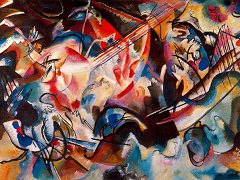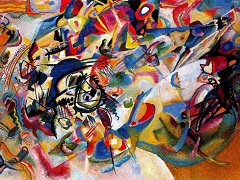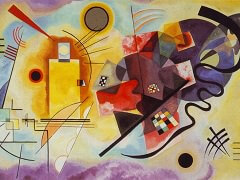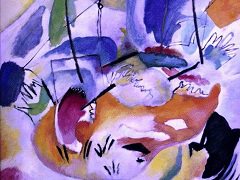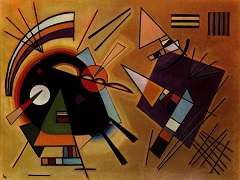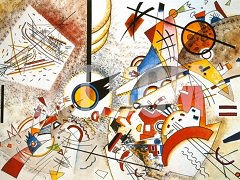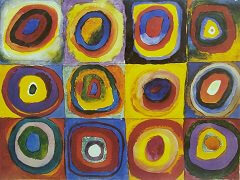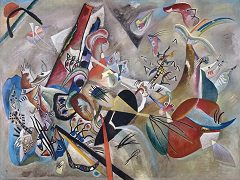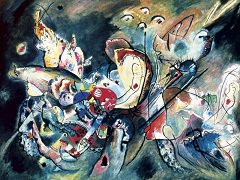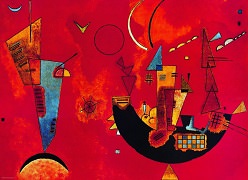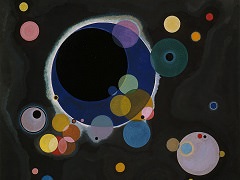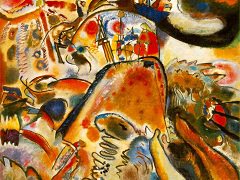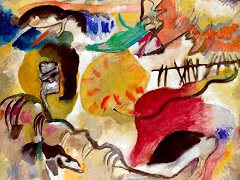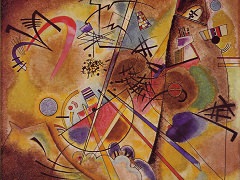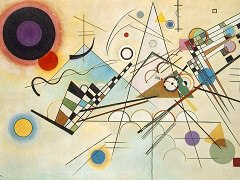Composition, 1490 by Wassily Kandinsky
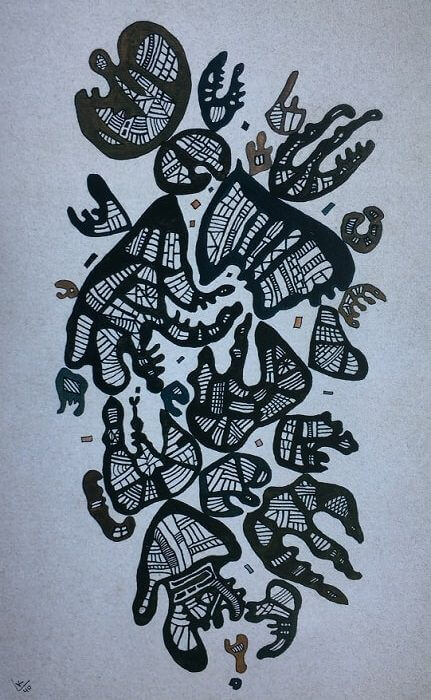
In an unusual move by Kandinsky, this particular work takes on the mantle of 'Composition', normally reserved for his most resolved works in terms of colour, line and composition, and always executed in oil. In this version of Composition, although the forms are quite complex, the artist has used a limited palette of gouache, normally a very vibrant medium, to express colour, suggesting that the work is perhaps ironic. Alternatively, due to the German presence in Paris and its subsequent privations to the French public, Kandinsky may not have had as much access to materials as he required.
These privations stem from the revenge sought by Germany against the French nation for the heavy burden they had suffered under the terms of the Treaty of Versailles, In retaliation the humiliation of France was complete when Germany demanded millions of francs to pay for the Occupation. It is estimated that nearly two million people left Paris in 1940, ostensibly to escape both the tyranny and the privations. Of the mainstream avant-garde artists, only Kandinsky and Pablo Picasso remained in Paris,

